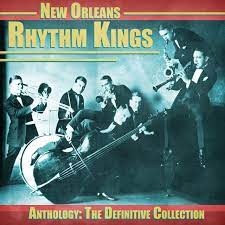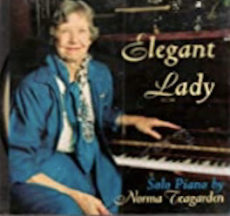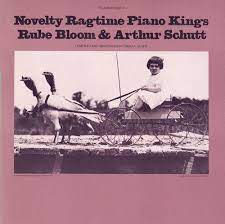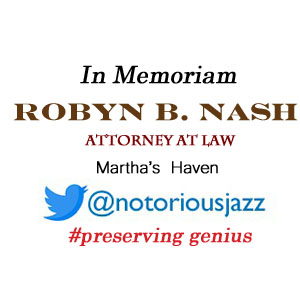
Daily Dose Of Jazz…
Elmer Schoebel was born in East St. Louis, Illinois on September 8, 1896. Early in his career he played along to silent films in Champaign, Illinois. After moving on to vaudeville late in the 1910s, he played with the 20th Century Jazz Band in Chicago, Illinois in 1920.
1922-23 saw him as a member of the New Orleans Rhythm Kings, then led his own band, known variously as the Midway Gardens Orchestra, the Original Memphis Melody Boys and the Chicago Blues Dance Orchestra, before joining Isham Jones in 1925. After returning to Chicago, Elmer played with Louis Panico and Art Kassel, and arranged for the Melrose Publishing House.
By the 1930s, Schoebel was writing and arranging, working as the chief arranger for the Warner Brothers publishing division. From the 1940s onward he did some performing with Conrad Janis, Blue Steele’s Rhythm Rebels (1958), and with his own ensembles in St. Petersburg, Florida. He continued to play up until his death.
Schoebel wrote a number of standards, including Bugle Call Rag, Stomp Off- Let’s Go, Nobody’s Sweetheart Now, Farewell Blues, and Prince of Wails. While a member of the New Orleans Rhythm Kings he wrote I Never Knew What A Girl Could Do, Oriental, and Discontented Blues.
Pianist, composer and arranger Elmer Schoebel, who as a leader only recorded one of his own compositions in 1929 titled Prince of Wails, transitioned on December 14, 1970.
More Posts: arranger,bandleader,composer,history,instrumental,jazz,music,piano

Daily Dose Of Jazz…
Andrew Anderson was born on August 12, 1912 in Mandeville, Louisiana. He played in the Young Tuxedo Band and the Allen Brass Band. In the mid to late Twenties he played with Joe Oliver in Chicago, Illinois.
He led the Pelican State Band in the late 1930s and continued playing in New Orleans with various bands until the 1980s. In the Seventies and Eighties he played and recorded with the New Orleans Ragtime Orchestra.
Trumpeter Andy Anderson transitioned on December 19, 1982.More Posts: history,instrumental,jazz,music,trumpet

Daily Dose Of Jazz…
Martin Abraham, better known as Chink Martin, on June 10, 1886 in New Orleans, Louisiana. He played guitar in his youth before settling on tuba as his main instrument. He played with Papa Jack Laine’s Reliance Brass Band around 1910, and worked in various other brass bands in the city in the 1910s.
In 1923, he traveled to Chicago, Illinois and played with the New Orleans Rhythm Kings with whom he made his first records. He also recorded guitar duets with Leon Roppolo, but these unfortunately were never issued. Returning to New Orleans with the Rhythm Kings in 1925, Martin made further recordings with them.
He also played with the Halfway House Orchestra with which he recorded on both tuba and string bass, the New Orleans Harmony Kings, and the New Orleans Swing Kings. In the 1930s, Martin worked as a staff musician at WSMB radio. He continued to play tuba for his entire career, though he also played and recorded on the double-bass from at least the 1920s onward.
He played with dozens of noted New Orleans jazz musicians, appearing on record with Sharkey Bonano, Santo Pecora, Pete Fountain, Al Hirt, and others. Tubist Chink Martin, who released one album under his own name on Southland Records in 1963, transitioned on January 7, 1981 in New Orleans.
More Posts: bandleader,history,instrumental,jazz,music,tuba

Daily Dose Of Jazz…
Norma Louise Teagarden was born in Vernon, Texas on April 28, 1911 into a musical family that consisted of her mother Helen, who played ragtime piano and taught; her brothers Charlie, a trumpeter, Clois, a drummer, and Jack, a trombonist. She performed with the latter in the 1940s and 1950s.
She performed on piano and violin during the early part of her career, which began in Oklahoma City, Oklahoma. In the 1920s she moved to New Mexico and worked in territory bands, returning to Oklahoma City in the 1930s. After another stint there she moved to California in the 1940s touring with her brother Jack from 1944–1947 and from 1952–1955.
Outside the Teagarden family, Norma worked with Ben Pollack, Matty Matlock, and Ray Bauduc. Eventually settling in San Francisco, California she often performed on solo piano and with bandleader Turk Murphy.
Pianist and violinist Norma Teagarden transitioned on June 6, 1996.
More Posts: bandleader,history,instrumental,jazz,music,piano,violin

Daily Dose Of Jazz…
Reuben Bloom was born April 24, 1902 in New York City, New York to Jewish parents. During the 1920s he wrote many novelty piano solos, recorded for the Aeolian Company’s Duo-Art reproducing piano system various titles including his Spring Fever. His first hit came in 1927 with Soliloquy; his last was Here’s to My Lady in 1952, which he wrote with Johnny Mercer. In 1928, he made a number of records with Joe Venuti’s Blue Four for OKeh, including five songs he sang, as well as played piano.
He formed and led a number of bands during his career, most notably Rube Bloom and His Bayou Boys, which recorded three records in 1930. The Bayou Boys consisted of Benny Goodman, Adrian Rollini, Tommy Dorsey, Mannie Klein and Frankie Trumbauer in the Sioux City Six.
His I Can’t Face the Music, Day In Day Out, Fools Rush In (Where Angels Fear To Tread) and Give Me The Simple Life has become a part of the Great American Songbook and jazz standards.
During his career, he worked with many well-known performers, including those mentioned above and Ruth Etting, Stan Kenton, Jimmy Dorsey and collaborated with a wide number of lyricists, such as Ted Koehler, and Mitchell Parish.
Pianist, arranger, bandleader, recording artist, vocalist, and author Rube Bloom published several books on piano method before he transitioned on March 30, 1976 in his home city.
More Posts: arranger,author,bandleader,composer,history,instrumental,jazz,music,piano,vocal






